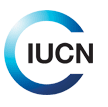The February newsletter highlights a recent CBD workshop for Central, East and Southern Africa at which participants recognized the importance of good governance for protected areas.
It also reports on capacity building efforts in Africa and Asia to respond to poaching, and on Quebec's "Plan Nord," which will increase protected areas but also exploit mining, forest and energy resources.
 February 2012: In its latest issue, the International Union for Conservation of Nature (IUCN) Global Protected Area Programme (GPAP) newsletter highlights the value of good governance in protected areas, as well as a conservation project in Quebec, Canada and anti-poaching efforts in Africa and Asia.
February 2012: In its latest issue, the International Union for Conservation of Nature (IUCN) Global Protected Area Programme (GPAP) newsletter highlights the value of good governance in protected areas, as well as a conservation project in Quebec, Canada and anti-poaching efforts in Africa and Asia.
The newsletter notes that at a recent workshop of the Convention on Biological Diversity (CBD) Programme of Work on Protected Areas (PoWPA) for Central, East and Southern Africa, participants recognized that good governance is crucial for protected areas to achieve their conservation goals. They also discussed examples of best practices in protected areas governance, and highlighted that successful governance often occurs in situations of conflict.
The newsletter also notes Quebec’s plan to turn 20 percent of its northern territory into protected areas by 2020, with another 30 percent of the area dedicated to low-impact development projects. First Nation communities in the area will be involved in the process. The plan is part of a larger project, “Plan Nord,” which also includes exploitation of mining, forest and energy resources, and has been criticized by conservation groups.
Finally, the newsletter reports that South Africa is recruiting 150 more park rangers to prevent rhinoceros poaching in Kruger National Park. Also to build anti-poaching capacity, Asian parks are recruiting 50 park rangers from Bhutan, India, Indonesia, Laos and Thailand. The training for the rangers is funded by the US Agency for International Development (USAID). [Publication: GPAP News, February 2012]